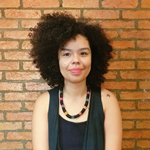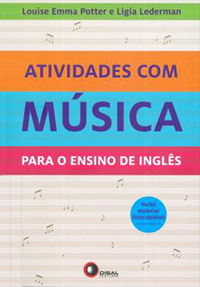By - Marina Farias*

For the last few years, white privilege and structural racism have been part of a growing debate on Human Rights worldwide; children and adolescents are constantly being bombarded with every kind of narrative through TV, digital media and even advertisement campaigns, which may have them feeling overwhelmed by the conflicting perspectives on the subject. As socially conscious and well-informed educators, we also should engage in the discussion, motivating our students to listen, research and understand more about it.
Despite of what more traditional views of education might preach, young learners should be given the opportunity to elaborate their political beliefs in the safe environment of the classroom, where they will learn social cues and comprehend the boundaries people must not cross whenever they feel like expressing their opinions.
When it comes to language classes, teachers should be aware that, in real-life situations, students are usually asked to discuss aspects of their own society with others. Although it’s important to guide them through different cultures, we must provide learners with enough vocabulary and knowledge to talk about their country’s problems so they can truly become active citizens and fluent foreigner speakers. Unfortunately, Brazilian society still hasn’t gotten rid of its strong colonial and racist roots and black people are still violently affected by racial bias on a daily basis. Therefore, showing students how to engage in the discussion is essential.
My purpose today is to analyze teaching possibilities regarding race, culture, and society. I hope to make my students understand what Black History Month is in the US and how differently it is remembered in Brazil, introducing them to national and international black references and eliciting group debates. I invite you to join me, so together we can raise awareness of the importance of celebrating November 20th in our language classes.
Pre-planning
There are many ways of structuring a class on Black History Month and that’s why teachers should be careful. The initial planning can keep some basic elements to all levels, but it also must adapt to different ages and groups. The holiday and the importance of the date could be taught through images, videos, storytelling, readings and even music, but it’s indispensable that students provide with information by researching on Black History and sharing their own findings. However, each class will require attention to the group profile and more basic/straight-forward objectives, otherwise it might lose focus.
Storytelling: Storytelling could work amazingly with younger groups (8 to 12). They may listen to a story about Black History in the US and, afterwards, be given the necessary tools to research, draw a timeline, and come up with their own narratives on how the 20th of November became popular in Brazil. They could also be introduced to important characters in Afro-Brazilian History (e.g., Zumbi dos Palmares), and later be instructed to write and tell the story of others. That could be a fun, interesting way to review past tenses for example.
Suggestions:
Music: Music usually works best with adolescents (13 to 17) – if they are interested in it – and adults. It’s noteworthy that nowadays many teenagers listen to Rap and Hip-Hop music so the teacher might as well introduce them to a more political perspective in both movements. The only problem is that, more often than not, Rap and Hip-Hop lyrics include swearing and sexual slurs, which shouldn’t be allowed in class and would demand a more careful and attentive selection of the songs. However, when it comes to this kind of approach, many other genres can be discussed in class: Blues, Jazz, Soul, R&B, Rock ‘n’ Roll, Bossa Nova, Samba, MPB, Brazilian Funk; they all have roots in Black Cultures and are strongly influenced by them even now. Students may research their origins and their importance to black communities, putting prejudice and biased opinions aside. As a final result, short presentations might come in handy.
Suggestions:
Brazilian references (for teachers and more mature groups):
Latin American references (in Spanish):
Debate: Debates also work best with teenagers, adults and more advanced levels in general. The class should start with a provocation from the teacher, which could be a video, a thought or question for reflection or a game. Later, students could make their research having the chosen theme of debate in mind (structural racism, university racial quotas, the importance of both Rap and Funk to poor, black communities etc.)
Suggestions:
Suggested class planning (first draft)
Conclusion
Unquestionably, there are many other possible ways of approaching issues of race in the classroom: lectures, PBL, TED Talks, movies and TV shows might also be part of your planning. Nevertheless, teachers should start exploring all those possibilities as soon as possible, considering the urgency of the presented debate and the importance of such relevant topics for the language learning process.
Although purely introductory, I hope you find this article and some of the recommendations it brings insightful. I also encourage you to start reflecting on the subject and consider including race in your classroom discussions – not only during Black History Month, of course, but throughout the entire year.
*Marina Farias é professora de inglês e escritora. Nascida na Baixada Fluminense do Rio de Janeiro, cursou Letras e Literaturas pela UFRRJ entre os anos de 2010 e 2014. Em 2015, mudou-se para São Paulo buscando se concretizar profissionalmente e, na cidade, descobriu o verdadeiro amor pela educação. Hoje, mora em Jundiaí e trabalha principalmente com crianças e adolescentes — a quem ensina, mas, acima de tudo, com quem aprende e compartilha conhecimento.
Contato: marinafariasescreve@gmail.com
LIVRO RECOMENDADO
